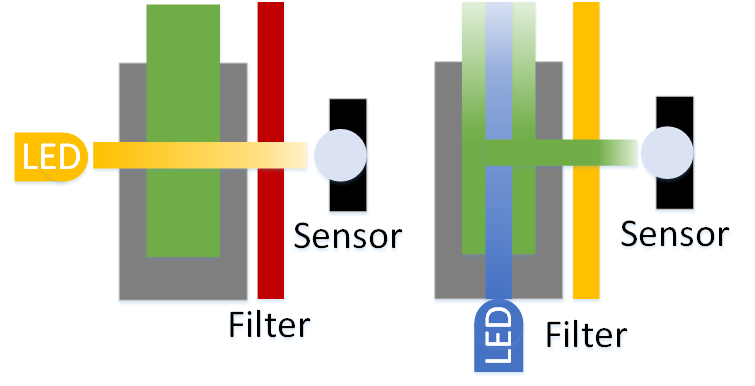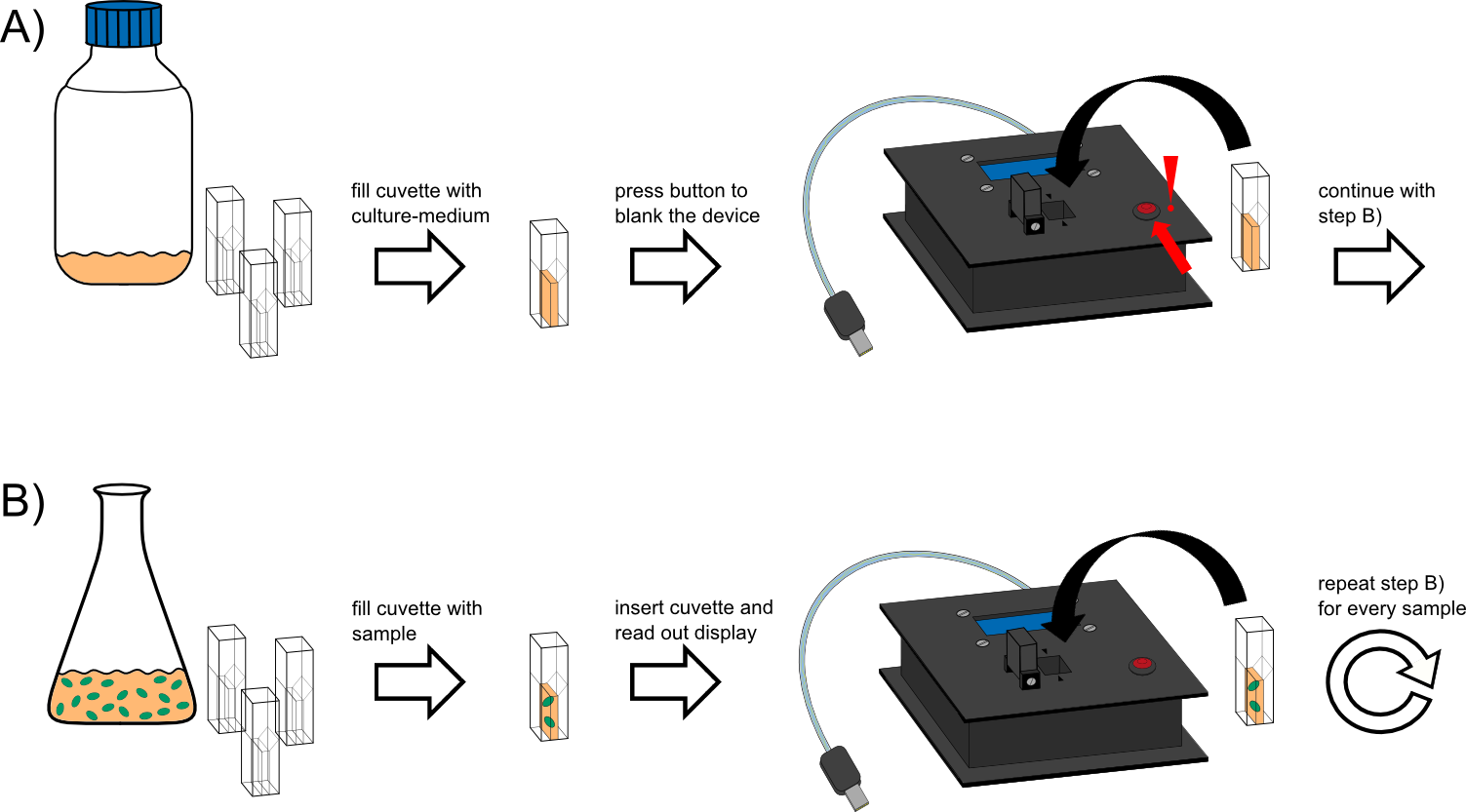Team:Aachen/OD/F device
From 2014.igem.org
(→Achievements) |
(→Achievements) |
||
| Line 100: | Line 100: | ||
* is at least as accurate as commercially available systems but at the same time costs significantly less | * is at least as accurate as commercially available systems but at the same time costs significantly less | ||
* produces stable, reproducible results | * produces stable, reproducible results | ||
| + | * weights little and is easy to carry around | ||
* uses widely available parts and is easy to build | * uses widely available parts and is easy to build | ||
* can measured both optical density and fluorescence | * can measured both optical density and fluorescence | ||
| + | |||
Commercially available equipment uses lasers and a set of two fine filters, one between laser and sample and one between sample and sensor. To beat down the price, our OD/F Device uses a simpler measuring principle: It has just one rather low-quality filter, between sample and sensor, and illuminates with an LED instead of a laser. However, the LED is not as accurate as a laser and has a non-optimal spectrum. On top of that, due to the missing filter between laser and sample, stray light might influence the measurement. Nevertheless, one main goal was to produce an inexpensive device. Given that we therefore had to compromise some of the measurement quality, were we still able to produce stable, precise and good data? | Commercially available equipment uses lasers and a set of two fine filters, one between laser and sample and one between sample and sensor. To beat down the price, our OD/F Device uses a simpler measuring principle: It has just one rather low-quality filter, between sample and sensor, and illuminates with an LED instead of a laser. However, the LED is not as accurate as a laser and has a non-optimal spectrum. On top of that, due to the missing filter between laser and sample, stray light might influence the measurement. Nevertheless, one main goal was to produce an inexpensive device. Given that we therefore had to compromise some of the measurement quality, were we still able to produce stable, precise and good data? | ||
| Line 109: | Line 111: | ||
[graphs showing the awesomeness of our OD/F device] | [graphs showing the awesomeness of our OD/F device] | ||
| - | On top of that, we also achieved all other goals we set in the beginning: The device makes do with one button, the blank button, only and is thus really straightforward to use. With a cost of just [https://2014.igem.org/Team:Aachen/PolicyPractices/Economics#economicsodf 60$], the OD/F beats any commercially available system by far. We also managed to build the device with common, inexpensive and easily available parts, and published all technical details and a construction manual on our wiki. At least, though we actually built two separate devices for OD and fluorescence measurement, both work really well and putting the two units into one case would just require to laser cut a new top. | + | On top of that, we also achieved all other goals we set in the beginning: The device makes do with one button, the blank button, only and is thus really straightforward to use. With a cost of just [https://2014.igem.org/Team:Aachen/PolicyPractices/Economics#economicsodf 60$], the OD/F beats any commercially available system by far. Due to the use of plexiglass and the compact design, one unit weighs less than '''500 g''' and can be easily connected to any power adapter via USB. We also managed to build the device with common, inexpensive and easily available parts, and published all technical details and a construction manual on our wiki. At least, though we actually built two separate devices for OD and fluorescence measurement, both work really well and putting the two units into one case would just require to laser cut a new top. |
{{Team:Aachen/Footer}} | {{Team:Aachen/Footer}} | ||
Revision as of 19:47, 15 October 2014
|
|
|
|
 "
"


